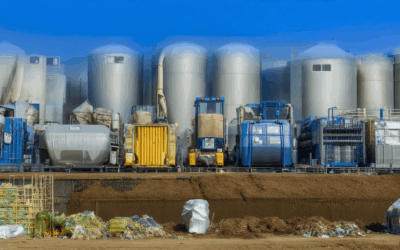Waste-to-energy biochar has emerged as a promising solution in the quest for sustainable energy conversion, offering a innovative approach to transforming organic waste into a valuable resource. This unique process not only addresses the growing challenge of waste management but also presents an opportunity to harness energy in a way that aligns with global efforts toward reducing carbon footprints. While the concept of biochar has gained traction in recent years, it remains a topic of debate due to its potential implications on local ecosystems and community dynamics. From exploring its controversial aspects to uncovering its energy production capabilities, this article delves into the intricate details of waste-to-energy biochar, examining its production methods, applications, and broader environmental impacts. By providing a comprehensive overview, we aim to shed light on whether biochar could play a pivotal role in the future of sustainable energy solutions.

Controversy Surrounding Biochar
Biochar has sparked debate due to several factors:
- Environmental Impact Concerns: The production process, particularly pyrolysis, raises questions about emissions and environmental sustainability. Critics argue that improper production methods may contribute to air pollution and carbon dioxide release.
- Research Discrepancies: While some studies highlight biochar’s benefits for soil health, others challenge these claims, leading to confusion among stakeholders like farmers and policymakers.
- Regulatory and Quality Issues: Lack of standardized production practices can result in varying biochar qualities, affecting its effectiveness and reliability when applied to agricultural fields.
- Economic Challenges: High production costs and competition from established soil amendments hinder biochar’s adoption, particularly for small-scale operations.
- Societal Perceptions: Biochar is viewed as a promising sustainable solution, yet skepticism arises from exaggerated claims and a lack of empirical evidence supporting its supposed miracles.
- Ethical Production Concerns: Questions surround the sourcing of raw materials and the environmental impact of producing biochar, especially if it leads to deforestation or other unsustainable practices.
Addressing these issues requires careful consideration of biochar’s production methods, regulatory frameworks, and its role in sustainable agriculture to ensure it becomes a viable solution without exacerbating existing environmental problems.
Can Biochar Be Used for Energy Production?
Biochar is a versatile material with diverse applications, including energy production. Its high carbon content and ability to store energy make it a promising resource for various energy-related processes.
Thermodynamic Processes for Biochar Production
- Pyrolysis: A process where biomass is heated in an oxygen-free environment, producing biochar, syngas, and carbon dioxide.
- Gasification: Involves heating biomass with steam and oxygen to produce syngas and biochar.
- Torrefaction: Occurs when biomass is heated in an inert atmosphere, resulting in biochar and volatile compounds.
- Hydrothermal Carbonization: Uses water and heat to convert biomass into biochar and other products.
Energy Applications of Biochar
- Solid Fuel Replacement: Biochar can replace fossil fuels in applications like industrial boilers and residential stoves, reducing greenhouse gas emissions.
- Biogas Enhancement: Adding biochar to anaerobic digesters increases methane production, boosting energy yield from organic waste.
- Carbon Sequestration: As a stable carbon form, biochar helps mitigate climate change by storing carbon in the soil and preventing CO2 release.
Considerations for Large-Scale Adoption
- Economic viability and scalability depend on production costs and infrastructure.
- Policy support and incentives are crucial for widespread adoption.
- Research and development are needed to optimize biochar production and utilization.
Biochar’s potential as an energy source is significant, offering both environmental and economic benefits. Its ability to store carbon while providing energy highlights its importance in sustainable energy systems.

Downsides of Biochar
Biochar, while offering numerous benefits, does come with some drawbacks:
- Nutrient Sorption: Biochar can absorb water and essential nutrients like phosphorus and potassium from the soil, potentially reducing plant availability and leading to lower crop yields.
- Pesticide Retention: Its porous structure traps pesticides and herbicides, reducing their effectiveness and potentially increasing pest populations.
- Heavy Metal Contamination: Some biochars may contain harmful heavy metals like lead, mercury, or arsenic, posing risks to soil health and food safety.
- Higher Costs: Production of high-quality biochar requires specific conditions, making it more expensive than conventional fertilizers.
- Inconsistent Quality: Variability in production methods can result in differing biochar qualities, affecting its effectiveness and reliability for farmers.

How is Biochar Produced from Waste?
Biochar is produced through a process called pyrolysis, which involves heating organic materials in a controlled environment to create a carbon-rich substance. Here’s a detailed overview of the process:
- Collection of Feedstock: Start by gathering organic waste materials such as agricultural residues, manure, leaves, or even municipal waste. These materials are rich in carbon and nitrogen, making them ideal for biochar production.
- Preparation: Dry the collected materials to remove moisture, as wet materials can hinder the pyrolysis process. Shape the material into forms like briquettes or pellets for uniform heating.
- Pyrolysis Process: Heat the prepared material in a closed container with limited oxygen. The temperature typically ranges between 300°C to 600°C, depending on the desired outcome. Longer residence times at higher temperatures can enhance porosity and surface area.
- Cooling: After pyrolysis, allow the biochar to cool rapidly to prevent reactivity with ambient air, preserving its properties.
- Storage: Store the biochar in a dry, contamination-free environment to maintain its effectiveness and prevent degradation.
The pyrolysis process is highly customizable, allowing for the production of biochar tailored to specific applications such as soil amendments, water filtration, or energy generation. Control over temperature, feedstock, and processing time ensures the final product meets the required standards for optimal performance.
Is Biochar Made from Human Waste?
Yes, biochar can potentially be made from human waste through a process called pyrolysis. This approach is part of efforts to explore sustainable ways to manage and utilize waste materials.
Biochar is typically created by heating organic materials like wood or plant-based waste in low-oxygen environments, resulting in a carbon-rich substance that improves soil health and promotes sustainable farming practices. However, recent explorations have looked into using treated human sewage as a raw material for biochar production.
These initiatives aim to transform waste into a valuable resource, reducing landfill dependency and contributing to circular economy principles. While currently experimental, such approaches hold promise for creating a sustainable loop for waste management and resource utilization.

Does Biochar Actually Sequester Carbon?
Biochar, produced through pyrolysis of organic materials, acts as a carbon sink by capturing and storing carbon dioxide from the atmosphere. This process contributes to carbon sequestration, helping mitigate climate change by reducing atmospheric CO2 levels.
When used as a soil amendment, biochar enhances soil health by improving fertility and water retention, which indirectly supports carbon storage. Studies indicate that biochar can effectively sequester carbon, though the exact amounts vary based on application methods and environmental conditions.
While biochar production involves high temperatures that may emit CO2, the net carbon gain is positive due to efficient carbon storage in the soil. This makes biochar a promising component of broader carbon removal strategies.
Research comparing biochar to other carbon sequestration techniques highlights its potential, though it is important to consider scalability and economic factors. Addressing production challenges and costs can further enhance its impact, making biochar a viable solution in the fight against climate change.
For more information on biochar and its role in carbon sequestration, visit our website to explore sustainable living practices and eco-friendly technologies.




0 Comments